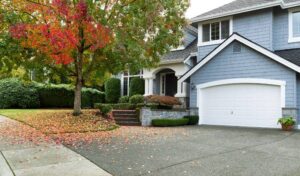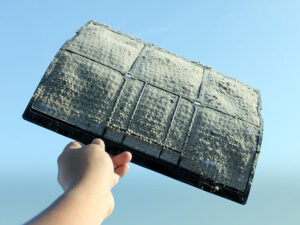5 Types of Heating Systems You Can Consider for Your Home
Replacing the heating system in your North Port, Florida, home may seem daunting and expensive. But upgrading to a newer model can help you save money in the long run. New heaters run more efficiently than older models, and in some cases, they’re better designed for mild Florida winters. Let’s take a look at some of the heating systems available and how they work.
Air-Source Heat Pumps
Heat pumps are a great heating system for Florida. Heat pumps don’t actually create heat. Instead, they transfer it from one place to another. During the summer, a heat pump works as an air conditioner by extracting hot air inside and expelling it to the outside.
Interestingly, even when it’s cold, there’s enough heat energy in the outdoor air for the heat pump to extract, and the warm air then gets blown into the house. The loop of extracting and transferring heat continues as long as the heat pump is running. Heat pumps work as both a heater and air conditioner, making them very efficient.
Geothermal Heat Pumps
Similar to an air-source heat pump described above, geothermal systems also use a heat pump. Instead of transferring heat from outdoor air to inside and vice versa, the ground-source geothermal heat pump expels hot air inside to the cooler ground and absorbs heat energy from the ground and delivers it into your home.
Underground temperatures are fairly constant year-round as opposed to air temperatures, which fluctuate throughout the year. Although the initial installation of geothermal heat pumps is high, they’re extremely efficient at heating and cooling your home.
Ductless Systems
As the name implies, ductless mini-splits or multi-splits don’t use ducting to deliver heat. The main components of the ductless system are the outside unit, the inside air handler and refrigerant. Tubing connects the outside part of the ductless system to the inside. Warm or cool air is delivered through the tubing instead of through ducting.
Ductless systems are ideal for older homes that don’t’ have ductwork or for add-on rooms. A single mini-split can service one room or area. If you have a large home and are using a ductless system, you’ll need several units as each room will need its own outside and inside unit. Multi-split systems can service several rooms at one time. Each room has its own inside air handler, but one outside unit can deliver warm or cool air into several areas.
Forced Air Systems
One of the most common types of heating systems is the forced-air or central heating system. The furnace heats air and delivers it into the entire house through the ducting system along with the vents and registers.
A standard forced-air system uses one central thermostat to control the temperature of the whole house. If you have a home with multiple levels, the upper rooms are often warmer than the lower ones. In addition, if you have unoccupied or unused rooms, the forced air system still sends heat into those rooms. As a result, it wastes energy and money.
HVAC Zoning
One way to overcome the issue of wasting heat on rooms that don’t need it or of having overheated upper rooms is to have your home HVAC system zoned. Each room or zone in your house has a smart thermostat that controls dampers in the ducting. When the temperature in the room drops below the setting on the thermostat, the thermostat sends a command to the damper to open, allowing warm air to enter only into that room.
If someone in the house likes their room warmer or cooler than the rest of the home, they can set the temperature to where they want without affecting the rest of the house. Avoid wasting heat in unused rooms by putting the temperature to a lower setting.
To discuss the different types of heating systems, give our professional team at All American Heating & Cooling a call today. We can help you decide which system is best for your unique home and needs. We look forward to speaking with you.
Image provided by iStock
You May Also Like

3 Dangers of Skipping Fall Heat Pump Maintenance in Parrish, FL
As you transition from the scorching heat of summer into the slightly more comfortable fall in Parrish, FL, you’ll need to make… Continue Reading 3 Dangers of Skipping Fall Heat Pump Maintenance in Parrish, FL…

Why Does My Heat Pump Turn On and Off So Often?
Heat pumps take at least 10 minutes to cool the average home in Punta Gorda, FL. Anything shorter than that should be… Continue Reading Why Does My Heat Pump Turn On and Off So Often?…

Why Does My Heat Pump Blow Hot Air in Cooling Mode?
It’s frustrating when you set your heat pump to cool your home in Sarasota, FL, and only warm or hot air comes… Continue Reading Why Does My Heat Pump Blow Hot Air in Cooling Mode?…
